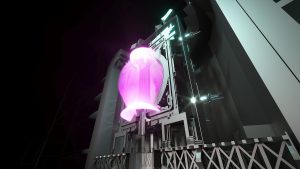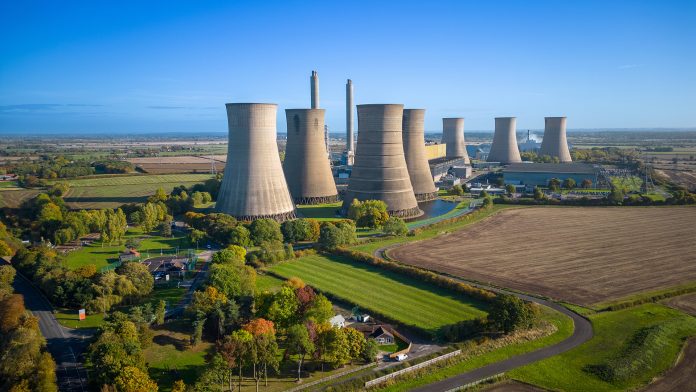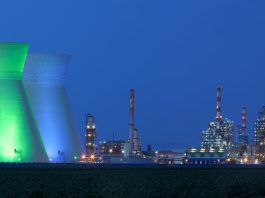Paul Methven, the inaugural CEO of UK Industrial Fusion Solutions Ltd (UKIFS), details the road ahead for the development of the UK’s prototype fusion energy plant.
Clearly, we must make significant changes to address the effects of climate change and provide our uncertain world with energy security. Fusion energy offers enormous potential for both. We must deploy renewable and traditional nuclear (fission) energy to the maximum extent. We know they work, but even with those, the scale of the global challenge means we need much more.
Energy demand will continue to rise well beyond 2050 as we strive for equity in access to energy, as the world population rises significantly and as we seek continued economic growth. We simply do not have enough low-carbon energy sources to meet this long-run demand, but we just might with fusion.
The energy transition must not be a zero-sum game, and few really appreciate how monumental this needs to be. We cannot wreck economies to get there because if that is the path, then the reality is that we will not follow it, and then it will be too late. We need to find ways of making the energy transition an industrial transition and one that provides equitable benefits. We can do that in fusion.
The UK is at the forefront of fusion science, engineering, and operations today. The UK also has the opportunity to be at the forefront of the commercial delivery of fusion, a global and strategic technology, for decades to come. The Government’s Fusion Strategy recognises that and aims to drive an industrial sector that can serve fusion programmes across the world.
Andrew Bowie MP, Minister for Nuclear and Networks, took to the stage at London’s Queen Elizabeth II Conference Centre during the opening of the IAEA Fusion Energy Conference last October to launch the update to that strategy with an audience of over 1,300 representing the international fusion community from 81 countries. Minister Bowie revealed more fusion news, detailing the UK’s Fusion Futures Programme – a £650m fusion energy package.
The following week, the Energy Bill received Royal Assent, setting out a new approach for regulating fusion energy to enable its rapid development. Regulation of fusion energy in the UK will be different from that of fission in recognition of fusion’s intrinsically lower hazards – fusion cannot result in a runaway reaction. All this is part of the UK’s drive to commercialise a transformational new energy source, aiming to ensure the UK remains at the forefront of innovative strategic technology and an emerging global industry.
Fusion regulation has also been on the international agenda with an event organised to share experiences on the safety and regulation of fusion facilities. Hosted by the International Atomic Energy Authority (IAEA), the event was attended by more than 100 representatives from 23 countries and three international organisations.
The Head of the IAEA, Kirsi Alm-Lytz, explained in her opening remarks how recent scientific breakthroughs in fusion science has led to both public and private sector ventures looking to move away from experimental fusion devices and towards prototype and commercial fusion powerplants. As the scale and nature of fusion facilities evolve, regulations and safety approaches must evolve with them.
The technical meeting was attended by the UKAEA, who support the IAEA as being central to capturing and consolidating knowledge into fusion standards, with the aim of achieving a degree of standardisation in design safety internationally whilst supporting innovation and reflecting the lower intrinsic hazards of fusion. Seeking high-level harmonisation of regulatory frameworks for fusion energy will aid the development and deployment of fusion energy systems globally in the future.
STEP
At the heart of the Government’s Fusion Strategy is STEP, the UK’s flagship fusion programme. STEP (Spherical Tokamak for Energy Production) aims to deliver a prototype fusion energy plant, targeting 2040, and a path to the commercial viability of fusion. By demonstrating net energy from fusion, we pave the way for the potential development of a fleet of future fusion power plants around the world. Most importantly, through the endeavour of designing and delivering that plant, STEP will focus and develop the essential industrial capability that will place and keep the UK at the forefront of global fusion energy.
From later in 2024, STEP will be led by UKIFS, a wholly owned subsidiary of the UK Atomic Energy Authority (UKAEA), with Professor Sir Ian Chapman remaining as the Group CEO. The breadth of UKAEA’s world-leading fusion research, which covers the full lifecycle of future fusion energy plants, is integral to STEP’s success.
I first joined UKAEA in 2020 to be part of the STEP programme because it really matters. It matters for the planet, for the UK’s economy, and its standing within the global community. It is also very challenging and exciting!
It has been an enormous privilege to lead the STEP programme over the last three years and I am genuinely honoured and humbled to have been given the opportunity to help take this amazing endeavour into its next stage as CEO of UKIFS. We are striving for something that has never been done before; very few opportunities like this come around and I am excited to continue to be part of helping unite a national endeavour to deliver fusion.
Fossil to fusion energy
One of the most important parts of what we will do is benefit the region around our site in West Burton. Minister Bowie joined Professor Sir Ian Chapman and I for a tour of West Burton, where he met with local representatives who are helping transform the former coal-fired power station, quite literally, from fossil to fusion energy, and spoke of his excitement to help make fusion power a reality.
The communities along the river Trent, known as Megawatt Valley, have been powering the UK for 60 years, and are rightly proud of that heritage. They want to keep powering the UK, and STEP provides an enormous opportunity for new growth and regeneration in that region, showing how the energy transition can make a real difference to individuals as well as the global climate challenge. The response of the West Burton community has been outstanding. STEP has been welcomed with open arms, and we look forward to working with local communities to shape the way we deliver.

Agility in action
There’s a huge amount to do, but we’ve come a long way already. The programme is divided into three phases. In the first phase, to 2024, we’ve focused on a number of key activities.
These include the concept design, development of the organisation to enable us to deliver a major technology and infrastructure programme, selection of a site, and getting the right regulatory framework in place.
Already, STEP’s technical team have:
- Explored over 66 integrated concepts with over 150 iterations;
- Been to 66 technical decision boards that have taken over 165 decisions;
- Delivered five Concept Maturity Level reviews; and
- Undertaken two Independent Fusion Technical Advisory Group reviews.
We have selected a home, West Burton, following a high-quality and competitive process that saw 15 self-nominated sites shortlisted to five, and a final decision by the Secretary of State announced in October 2022. The UKIFS announcement followed shortly after, alongside the commitment to develop a skills centre at West Burton to provide high-value jobs for future generations.
Site characterisation works are underway and, in conjunction with the local community, we are developing a Masterplan that considers transport infrastructure and the social and economic impact of the programme. This is levelling up in action!
You can hear the thoughts of local residents by watching a video from our recent community engagement event held in Retford.
We have been working hard on our industrial model, which will combine the best of the public and private sectors in an integrated delivery team. We will soon go formally to market for our Engineering Partner and Construction Partner, who will work alongside UKAEA as the Fusion Partner in an Integrated Delivery Team.
From the appointment of these strategic partners will flow a vast range of other opportunities for the broader supply chain – details of this will unfold in due course. Our approach is to create a true rainbow team that enables the best of each organisation and the best of every individual to be brought together.
It is a rather nice analogy that what we seek to achieve technically, fusing high-energy particles so we release more energy than they hold individually, is also what we aim to do as a public-private integrated delivery team. Each person is vital when alone, but when fused together, they are so much more.
For further information about STEP and future opportunities, visit: step.ukaea.uk
Meet Paul Methven CB
Paul joined the STEP programme in September 2020 from the Ministry of Defence, where he was Director of Submarine Acquisition at the Submarine Delivery Agency. In this role, he was Programme Director for Dreadnought, the UK’s second-largest major programme after HS2, and has previously led a number of other major and complex programmes across the MoD.
Paul joined the Royal Navy in 1988 as a submariner, having a long and distinguished career, achieving the rank of Rear Admiral and being awarded a CB (Companion of The Order of the Bath). He is also a graduate of the Government’s Major Projects Leadership Academy.
Paul is married and has two grown-up children. He lives in Devon and enjoys sailing whenever he can, skiing and playing the bagpipes (but not all at the same time).

What is fusion energy?
Fusion energy has the potential to provide ‘baseload’ power, complementing renewable and other low carbon energy sources as a share of many countries’ energy portfolios. Achieving this involves working at the forefront of science, engineering, and technology.
Based on the same process that powers the stars and the Sun, a mix of two forms of hydrogen are heated to extreme temperatures – ten times hotter than the core of the Sun – they fuse together to create helium and release huge amounts of energy.
There is more than one approach of achieving fusion. Examples include magnetic confinement and inertial confinement. At UKAEA, we hold this hot plasma using strong magnets in a ring-shaped machine called a ‘tokamak’. Another way is to use lasers to compress a small pellet.
The energy created from fusion can be used to generate electricity in the same way as existing power stations.
Please note, this article will also appear in the seventeenth edition of our quarterly publication.









